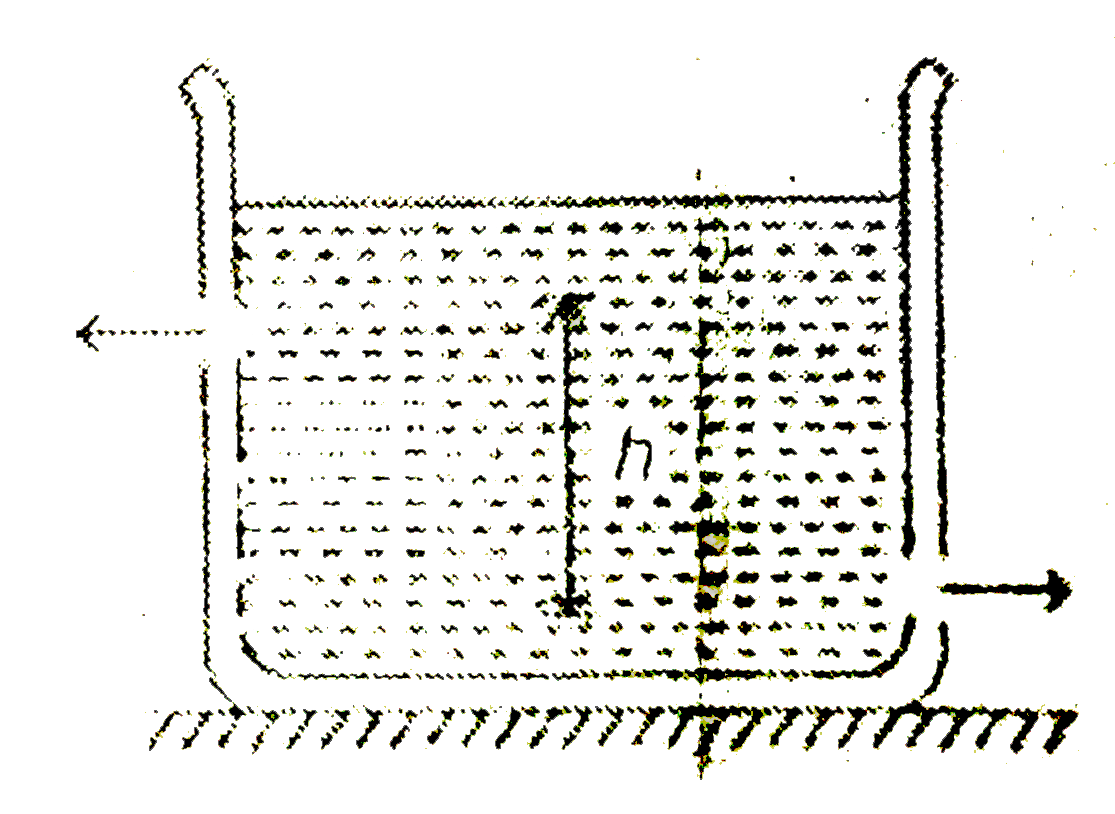Medical entranes gallery from DC PANDEY ENGLISH Chapter 13 FLUID MECHANICS for Class 11
| Class 11 | PHYSICS |
| Chapter | FLUID MECHANICS |
| DC PANDEY ENGLISH | Medical entranes gallery |
| Medium | English |
| Academic Year | 2023-2024 |
Question 2
A rectangular tube of uniform cross section has three liquids of densities ρ1,ρ2 and ρ3. Each liquid column has length l equal to length of sides of the equilateral triangle. Find the length x of the liquid of density ρ1 in the horizontal limb of the tube, if the triangular tube is kept in the vertical plane.
 View Solution
View SolutionQuestion 3
Two non-mixing liquids of densities ρ and nρ (n>1) are put in a container. The height of each liquid is h. A solid cylinder of length L and density d is put in this container. The cylinder floats with its axis vertical and length pL(p<1) in the denser liquid. The density d is equal to : View SolutionQuestion 23
A drop of some liquid of volume 0.04cm3 is placed on the surface of a glass slide. Then, another glass forms a thin layer of area 20cm2 between the surfaces of the two slides. To separate the slides a force of 16×105 dyne has to be applied normal to the surfaces. The surface tension of the liquid is (in dyne cm−1)View SolutionQuestion 28
There are two identical small holes of area of cross-section a on the opposite sides of a tank containing a liquid of density ρ. The difference in height between the holes is h. Tank is resting on a smooth horizontal surface. Horizontal force on which will have to be applied on the to keep it in equilibrium is
 View Solution
View SolutionQuestion 36
Liquid rises to a height of 2 cm in a capillary tube and the angle of contact between the solid and the liquid is zero. If the tube is depressed more now so that top of capillary is only 1 cm above the liquid, then the apparent angle of contact between the solid and the liquid is View SolutionQuestion 45
Water from a tap emerges vertically downwards with initial velocity 4ms−1. The cross-sectional area of the tap is A. The flow is steady and pressure is constant throughout the stream of water. The distance h vertically below the tap, where the cross-sectional area of the stream becomes (23)A is (g=10m/s2)View Solution
All Exercises from DC PANDEY ENGLISH Class 11 PHYSICS FLUID MECHANICS
- Assertion and Reason
- B) Medical entrance special format question
- Check point 13.1
- Check point 13.2
- Check point 13.3
- Check point 13.4
- Example
- Example 13.1
- Example 13.10
- Example 13.11
- Example 13.12
- Example 13.13
- Example 13.14
- Example 13.15
- Example 13.16
- Example 13.17
- Example 13.18
- Example 13.19
- Example 13.2
- Example 13.20
- Example 13.21
- Example 13.22
- Example 13.23
- Example 13.24
- Example 13.25
- Example 13.26
- Example 13.27
- Example 13.28
- Example 13.29
- Example 13.3
- Example 13.30
- Example 13.31
- Example 13.32
- Example 13.33
- Example 13.34
- Example 13.35
- Example 13.4
- Example 13.5
- Example 13.6
- Example 13.7
- Example 13.8
- Example 13.9
- Exercise16.1
- Exercise16.2
- Exercise16.3
- Exercise16.4
- Exercise16.5
- Exercise16.6
- Exercise16.7
- Exercise16.8
- Introductory Exercise
- Level 1 Assertion And Reason
- Level 1 Single Correct
- Level 1 Subjective
- Level 2 Comprehension Based
- Level 2 More Than One Correct
- Level 2 Single Correct
- Match the columns
- Medical entranes gallery
- Miscellaneous Examples
- Solved Examples
- Subjective
- Subjective Question
- Taking it together
